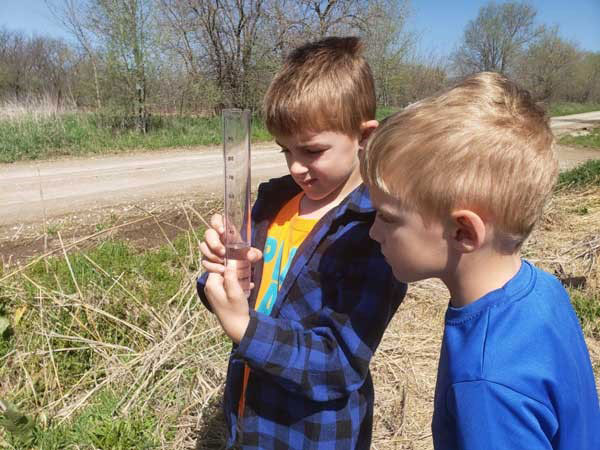Most people think basketball when they hear the phrase “March Madness”. However, in the weather reporting world, March Madness means the annual recruitment drive for the national Community Collaborative Rain Hail and Snow network (CoCoRaHS). Every state vies for the chance to have the most recruits during the month of March. A trophy is awarded for both the total number of new recruits and for the highest per capita recruitment total. The latter category gives states with lower population densities a chance to win against the more populous states.
What is CoCoRaHS?
CoCoRaHS is an acronym for the Community Collaborative Rain, Hail and Snow Network. CoCoRaHS is a unique, non-profit, community-based network of volunteers of all ages and backgrounds (Figure 1) working together to measure and map precipitation (rain, hail, and snow). By using low-cost measurement tools, stressing training and education, and utilizing an interactive website, the aim is to provide the highest quality data for natural resource, education, and research applications. CoCoRaHS has been active in Kansas since 2004. More observers are always very welcome.

Figure 1. Two young scientists in the making! Weed Science Specialist, Sarah Lancaster, sent in this photo of her two sons reading their CoCoRaHS rain gauge following a rain event in late April 2020. Photo by Sarah Lancaster, K-State Research and Extension.
Each time a storm -- rain, hail, or snow -- crosses your area, volunteers take measurements of precipitation from as many locations as possible. These precipitation reports are recorded on the website, https://cocorahs.org/. The data are then displayed and organized for the end users to analyze and apply to daily situations ranging from water resource analysis and severe storm warnings to neighbors comparing how much rain fell in their backyards. For example, Manhattan was able to document the highest rainfall amount during the Labor Day 2018 flood, thanks to a CoCoRaHS observer (Figure 2).

Figure 2. Riley County, KS CoCoRaHS reports for September 3, 2018.
No rain is still an important observation
Volunteers also report when it DOES NOT rain. Documenting the fact that a part of the county missed a precipitation event helps improve our understanding of drought conditions. That information is also useful in improving radar and satellite rainfall estimates.
Who uses the CoCoRaHS data?
CoCoRaHS is used by a wide variety of organizations and individuals. The National Weather Service, other meteorologists, hydrologists, emergency managers, city utilities (water supply, water conservation, storm water), insurance adjusters, USDA, engineers, mosquito control, ranchers and farmers, outdoor & recreation interests, teachers, students, and neighbors in the community are just some examples of those who visit the website and use the data.
One of the neat things about participating in this network is coming away with the feeling that you have made an important contribution that helps others. By providing your daily observation, you help to fill in a piece of the weather puzzle that affects many across your area in one way or another.
Don’t worry if you don’t get signed up in March. New observers are welcome any time of the year. In fact, while Kansas hasn’t won either trophy in a number of years, we have seen steady increases in observers with June actually being our top month for recruitment. We have also achieved a significant milestone – highest percentage of new recruits actually making their first observation. It is important to make that second step. After you sign up and get your gauge, actually deploy the gauge and send in the observations.
To join CoCoRaHS, just go to the website CoCoRaHS.org and click “Join Now”.
If you have questions about the program, contact Mary Knapp at Kansas State University by email at mknapp@ksu.edu or phone at 785-313-1562.

Mary Knapp, Assistant State Climatologist
mknapp@ksu.edu